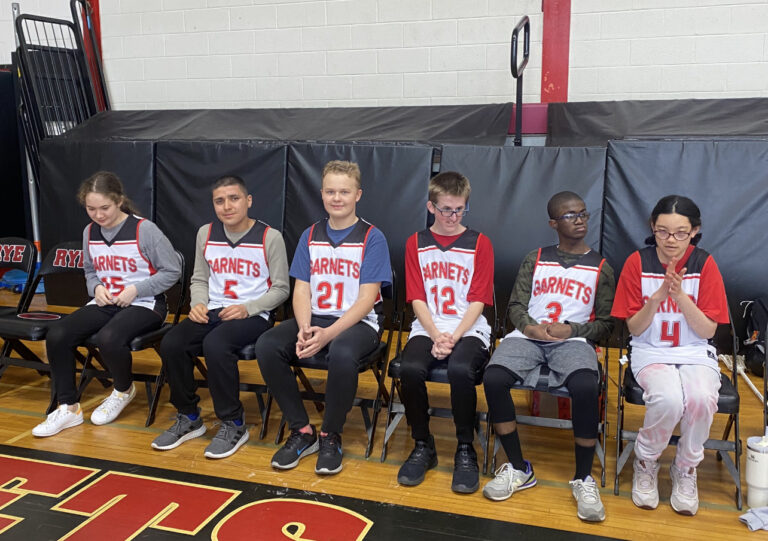Guest Column: How RHS Handles Sexual Assault & Harassment
Juliet Smith is a junior and a member of the Academy at Rye High School. The Academy is a program that focuses on project-based learning.
Smith chose to write about sexual assault and harassment as it is an important yet overlooked issue that she believes is important to address.
By Juliet Smith
 Four years ago, two students at Rye High School sent out a survey to the girls of the school, asking them questions about their experiences with sexual assault and harassment. The questions ranged from catcalling to sexual assault. Most of the answers came back as an overwhelming yes. Now as students return to their regular routines it seems important to re-discuss the protections that have been put in place for students dealing with sexual assault and harassment.
Four years ago, two students at Rye High School sent out a survey to the girls of the school, asking them questions about their experiences with sexual assault and harassment. The questions ranged from catcalling to sexual assault. Most of the answers came back as an overwhelming yes. Now as students return to their regular routines it seems important to re-discuss the protections that have been put in place for students dealing with sexual assault and harassment.
In the effort to find out more about how adults, specifically those working at schools, have handled and continue to handle the issue, emails were sent to various administrators. The emails contained questions regarding the support systems set in place already and anything else that the school is trying to accomplish. The emails received in reply all tended to boil down to the same result; there are minimal support systems.
While Rye High School does what it can to support victims of sexual violence, there is no official support system or person to turn to. According to the administrators that were emailed, the reason for this is that not many people come forward with cases. While the district wishes people would come forward and share their experiences, it doesn’t tend to happen, making support systems a low priority. Most of the time, students that do come forward are sent to the psychology suite or counseling office. While it does show care and concern from the school to direct the students there, these places are not always equipped to handle a situation like sexual violence, and a professional helper or system would greatly improve how victims can report incidents. It is also possible that the lack of systems in place contributes to a lack of students coming forward. Including a professional system may encourage more people to report.
The State of New York has done what it can to provide support for students on campus, support that is specifically for survivors of sexual violence. The “Enough Is Enough” law works to outline consent laws, trains administrators and teachers to handle situations, and requires colleges to report data on sexual assault reports. The State University of New York holds the idea that resources and responses to victims are driven by how survivors act. Survivors stepping forward and speaking about their experiences lead to better research and allows schools to edit their policies. Students are encouraged by the university to come forward and explain what happened as it helps the school. This leads to more people speaking out as there is the idea that change will occur if they just speak up. For high schools, on the other hand, most programs focus on dating more than specifically sexual assault. Having a program that focuses solely and explicitly on sexual violence and how to handle it would be safer for students and potentially have the same effect as college programs; more people come forward to help shape them.
In pursuit of finding out why students didn’t choose to come forward, interviews were conducted with both current Rye High School youth officer, Rye Police Detective Caputo, and sexual violence advocate Amanda Yannett. While their views differed on many points, there was consensus that there aren’t people coming forward to report incidents. When speaking with Detective Caputo he insisted that one of the biggest problems, when people try to report, is the goal of trying to settle any issues with sexual assault and harassment outside of the legal avenues and without the involvement of the district. As Detective Caputo sees it, generally people aren’t comfortable addressing the issue with the district or the police as it’s easier to settle issues amongst the families directly. He also mentioned that when students did come forward it was often too late to document anything, and that left any legal cases weak. While that may be the case for some situations, Ms. Yannett attributes the lack of reporting to the school district’s lack of guidance for students. She noted that in the student handbook there was a lack of clear labeling to direct a student looking to contact the Title IX coordinator. The lack of clear notation directly violated the laws put in place to protect students attempting to report an incident. The lack of clear direction means that students going through one of the most traumatic events of their lives have to struggle to find the best way to decide whether to report or not.
Sexual violence has been a significant problem in communities all over the country, and Rye is no exception. The town and school both have work to do with protecting and helping survivors. Providing actual resources to students and speaking up about the issue are steps in the right direction to making Rye safer for victims. The lack of resources available in Rye High School is most likely a reason for not many people coming forward and sharing their experiences, despite many people having them. Having a genuine conversation about the problem will also force people to address it face-to-face and figure out how we as a community will move forward with handling the situation.





